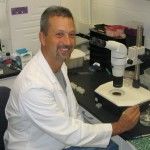Reduced oxygen availability causes cellular damage and death, particularly in neurons (via stroke) or cardiac myocytes (via heart attack). However, brief sublethal exposure to low oxygen can lead to proadaptive mechanisms that protect against subsequent decreases in oxygen. We propose to determine the molecular identity of membrane ion transporters that have been implicated in proadaptive conditioning via their function in the mitochondria and to study their regulation using the genetic model organism C. elegans.
Acute myocardial infarction is the leading cause of death throughout the world, while stroke is the third leading cause of death in the United States. Ischemia-reperfusion injury associated with these conditions can lead to permanent tissue damage or neurologic deficits. It is well recognized that non-lethal exposure to ischemia for short periods of time, however, elicits a proadaptive response that protects cells from subsequent ischemic injury in a process referred to as preconditioning. Mitochondria are central to the pathogenesis of ischemia-perfusion injury and are believed to be a major target for preconditioning. In particular, ion channels in the inner mitochondrial membrane that transport potassium (KATP and KCa channels) are believed to attenuate the mitochondrial cell death response following preconditioning. The molecular identity of these channels is controversial. The major goal of this proposal is to unambiguously identify the mitochondrial KATP and KCa channels and a second goal is to identify signaling processes that regulate channel activity in the mitochondria in response to preconditioning. The experiments designed to meet these goals will be carried out in the nematode C. elegans. It has recently been shown that preconditioning can protect this genetic model organism from hypoxic injury and death. Moreover, we have found that C. elegans express functional KATP and KCa channels in their mitochondria. We propose to combine the strengths of two investigators, one with extensive experience in mitochondrial bioenergetics and the other in nematode ion channel physiology, to test the hypothesis that KATP and KCa channel regulation is an evolutionarily conserved mechanism that contributes to preconditioning in C. elegans. We will utilize the vast array of genetic resources available in C. elegans to screen strains containing mutations in candidate genes for channel activity in purified mitochondria, for channel regulation via conserved signaling pathways, and for their ability to be preconditioned. The results from these experiments will improve our ability to develop protective therapeutics targeted at channels or upstream regulators and designed to mimic the effects of preconditioning in mammals.
